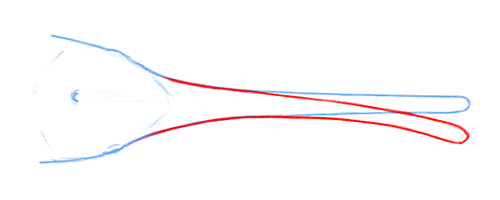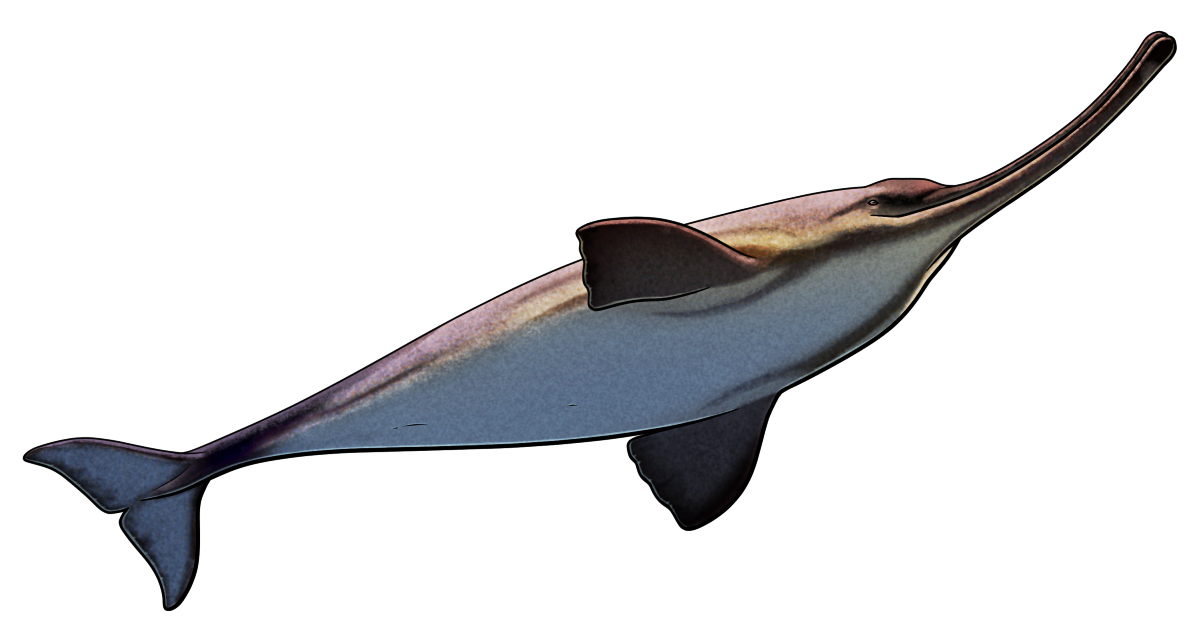Toothed whales – the branch of cetaceans that includes modern dolphins, porpoises, beaked whales, and sperm whales – have surprisingly asymmetrical skulls, with some of the bones skewed to one side and just the left nostril forming their blowhole.
Some of the most obvious external manifestation of this lopsidedness can be seen in sperm whales, which have their blowhole at the front left side of their head, and in male narwhals, which usually have a single left-side tusk.
This sort of asymmetry first appeared in the skulls of early toothed whales around 30 million years ago. And since the highest amounts of wonkiness have gone on to develop in lineages that hunt in dark, cluttered, or murky waters, this suggests that the trait is somehow linked to the evolution of complex echolocation.
Some ancient members of the river dolphin lineage also had some additional unusual asymmetry, sometimes having slightly sideways-bending snouts.
Ensidelphis riveroi was one of the weirdest of these, living around the coasts of what is now Peru during the Miocene, about 19 million years ago. Around 3m long (~10′), it had a very long narrow toothy snout that curved distinctly off to the right along its length.

It’s not clear what the function of this bend was, or even if the only known skull actually represents the normal condition for this species. But Ensidelphis’ bendy snoot might have been used to probe around in muddy seafloor sediment or to extract prey from crevices, possibly like an underwater version of the modern wrybill.

